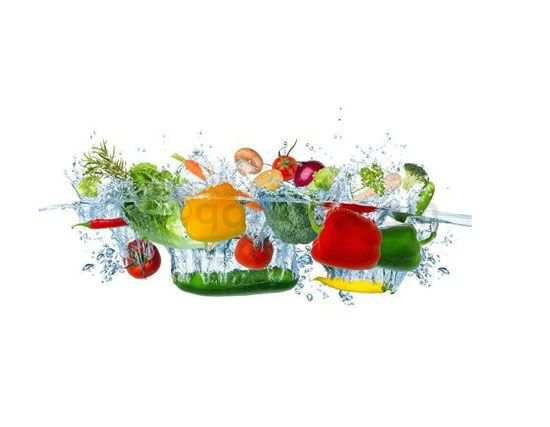

2022-05-10 21:27:41
Ozone is approved for Use with Food
The USDA and FDA have approved ozone as an antimicrobial agent for use with food processing. With regulatory approval ozone has become a great option for cost-effectively disinfecting food.
Use ozone to disinfect stored food for unprecedented pathogen destruction.

Ozone Advantages
the most powerful oxidizer available
environmentally friendly
no chemical storage required
three-thousand times more germicidal than chlorine
instant pathogen destruction
no harmful chemical residual
Ozone in the Food Industry
Because ozone is a safe powerful disinfectant it can be used to control biological growth of unwanted organisms in products and equipment used in the food processing industries. Ozone is particularly suited to the food industry because of its ability to disinfect microorganisms without adding chemical by- products to the food being treated or to the food processing water or atmosphere in which food are stored.
Ozone Applications for Food Products and Processing
Washing fruits and vegetables
Meat and Poultry Production and Processing
Seafood Processing and Aquaculture
Food Storage
Pest Management
Irrigation
Air Quality Control
Beverage Production
Extended Benefits of Ozone
Higher levels of ozone can be used before altering the taste or appearance of the produce.
Ozone improves taste and appearance over the use of chlorination alone: Better Quality Produce
Ozone lowers counts of spoilage microorganisms in wash water and on produce surface: Longer Shelf Life
Ozone keeps wash water cleaner longer: Less Water Usage
An ozone treatment is capable of destroying pesticides and chemical residues in wash water and on produce.
Eliminate chlorine from a process: No THM's or other chlorinated by-products.
Implementing ozone reduces the risk of cross-contamination of pathogens.
Ozone leaves no chemical residue: No Final Rinse - Less Water Usage
An ozone system mitigates the need for storage handling use and disposal of chemical sanitation agents.
In some situations ozone reduces contamination in discharge water: Lower Cost Waste Water Disposal
Ozone is natural and chemical free allowing the use of ozone in organic food production and processing.
For specific information on your application and the use of Ozone Generators for your food product please contact us freely.
Ozone and Food Storage
Ozone Helps Produce Last Longer by Extending Shelf Life
Common Applications for Ozone use in Food Storage
Potato Storage Facilities
Onion Storage Facilities
Citrus Fruit Storage
Vegetable Storage
Aged Ham Storage
Cool Meat Storage
Preservation of Fish and Seafood
General Cold Storage Facilities
Methods of Ozone Application
Ozone gas can be distributed throughout a cold storage facility at low levels.
Ozone-sterilized ice is used to pack fresh fish and seafood to prolong freshness.
Ozone gas is used in meat coolers to inhibit microbiological growth and extend shelf life.
Ozone is dissolved into water to wash fruits and vegetables and remove mold and bacteria.
Low levels of ozone gas can be used in containers to prolong shelf life upon delivery.
Dissolved ozone is used to wash meat and poultry to remove bacteria and extend refrigerated shelf life
Benefits of Ozone Use in Cold Storage
Extend shelf-life of the produce within the cold storage facility.
Air-borne microbiological control
Low ozone levels (<0.3 PPM) will inhibit microbiological growth in the air.
High ozone levels can be used for disinfection when room is empty.
Surface sanitation can be maintained
By inhibiting microbiological growth pathogens on the surface of produce containers and walls will be kept to a minimum.
Eliminate mold growth from cold storage area.
Odor control
Maintain an odor-free cold storage area
Keep odors from cross contaminating between products
Ethylene Removal
Important Factors in Ozone Storage
Human Safety
Human safety must be factored in to ensure ozone levels are below safe levels when workers are in the area.
Concentrations
Different produce meats and seafood will require different ozone concentrators to achieve effective preservation.
Ethylene
Many fruits and vegetables release ethylene this gas accelerates the ripening process. Ozone rapidly oxidized ethylene.
Humidity
Food storage facilities are commonly higher humidity areas. Ozone is rapidly decomposed in high humidity areas. Ozone must be rapidly distributed throughout the area. However humidity can be used to destroy ozone quickly allowing employees to return to an area after the ozone introduction has ceased.
Circulation
Food to be stored in ozonized atmospheres should be packed to allow circulation of the ozone and air.
Mold
High humidity levels will make mold and most bacteria more susceptible to ozone. Ozone control of mold and spores is best conducted in relative high humidity areas.
Contact: Ozonnier Micronano Bubble Generator Manufactor
Phone: 086 15615887629 (whatsapp)
Tel: 086 15615887629 (whatsapp)
E-mail: [email protected]
Add: Qingdao, China